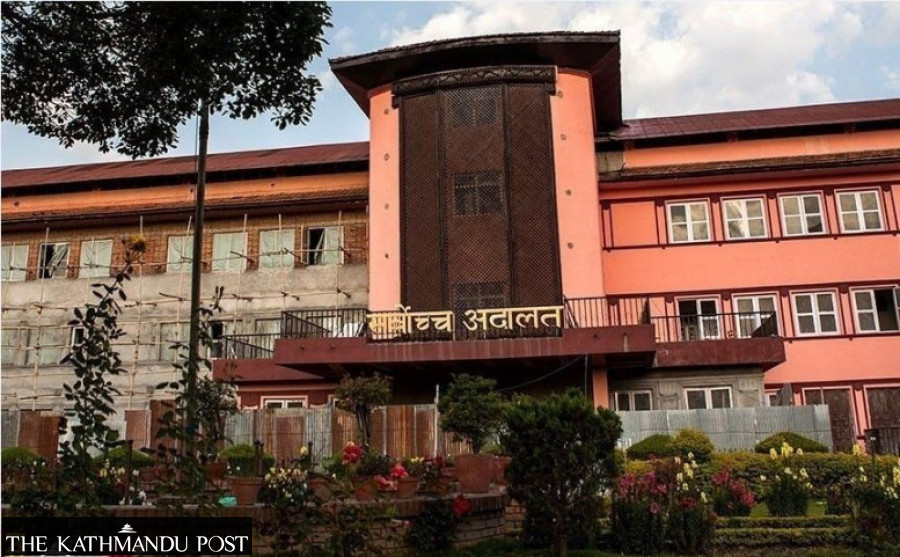Editorial
Setting a low bar
The tussle between the bar and the bench is eroding people’s trust in the judiciary.
The tussles between the bench and the bar, two complementary branches of the judiciary in normal course, are becoming far too common in Nepal. The conflict between the two sides is a worrying sign for the overall health of the country’s legal system. Take the recent appointment of two Supreme Court justices as the most recent case in point. The Judicial Council on September 27 nominated two high court chief judges as Supreme Court justices even as lawyers were protesting against the possible nominations. The dispute took a nasty turn after the Supreme Court administration on Tuesday filed a contempt of court case against Nepal Bar Association President Gopal Krishna Ghimire for criticising the justice selection process. He had accused the council of picking the two justices based on a monetary deal.
With the filing of the contempt case, the confrontation has entered a new stage, for the original dispute was limited to the judges’ hierarchy. The bar demanded the correction of a provision, which was included in a recently amended regulation, that “unfairly demoted judges” appointed from among lawyers, placing them below career judges in the hierarchy. It was an issue that could (and should) have been amicably resolved through negotiations between the two sides. Both sides are at fault.
The protest of the Bar President Ghimire could have been more effective had he clearly spelled out how exactly money changed hands during the judge-appointment process (if he had such evidence in the first place). What we see of late is leaders of our vital institutions giving provocative statements to further complicate things instead of speaking based on facts and with an intent of giving solutions to existing problems.
The top court justices in turn took serious exception to Ghimire’s remarks. But those in the leadership should also not forget that the judiciary is not free from anomalies. Several study panels including those led by Shrihari Aryal, Ram Prasad Shrestha, Girish Chandra Lal and Harikrishna Karki all have pointed out the malpractices that are rampant in courts. The report of the panel led by Karki, who later became chief justice, was widely discussed as it categorically described anomalies including the unwanted influence of middlemen in the court and underscored the need to urgently address the problem. Accordingly, while presenting his action plan, during his parliamentary hearing on Wednesday, proposed chief justice Prakash Man Singh Raut pledged to reform laws to remove the problem of middlemen in courts.
It was only two years ago that both the bar and judges were on a warpath against the then chief justice Cholendra Shamsher Rana. Justices as well as lawyers had boycotted hearings demanding Rana’s resignation. Hence, the judiciary that is entrusted with a big responsibility of arbitrating disputes of other individuals and institutions has itself come into dispute.
Thousands of cases are pending in courts. Common folks have to wait for years for justice. There is no way Nepal’s justice delivery system can be improved without the bar and the bench closely working together. Instead, their acrimonious public debate threatens not only to delay the system even more. It will also further erode the public’s faith in the judiciary.




 18.12°C Kathmandu
18.12°C Kathmandu














